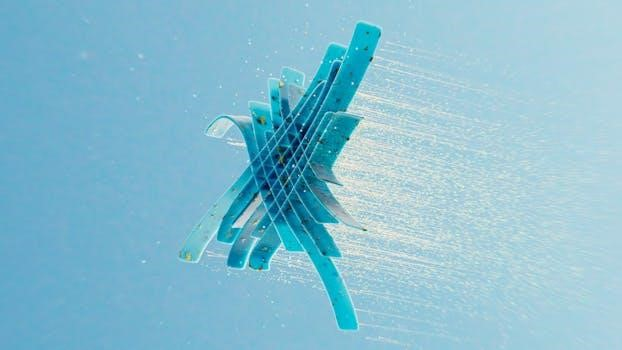
Overview of NRP 8th Edition
The Neonatal Resuscitation Program (NRP) 8th edition, released in June 2021, presents a comprehensive approach to newborn care. It details the steps for evaluating and resuscitating newborns. It includes minor adjustments to the algorithm itself.
The 8th edition of the Neonatal Resuscitation Program (NRP) marks an evolution in newborn care, building upon previous editions while incorporating updated practices. This edition, launched in June 2021 by the American Academy of Pediatrics (AAP), focuses on providing healthcare professionals with the latest evidence-based guidelines for neonatal resuscitation. While the core algorithm remains largely consistent with the 7th edition, the 8th edition introduces key shifts in program administration, course facilitation, and educational methodology. It aims to enhance learning through a new platform, Resuscitation Quality Improvement (RQI), and provides two learning delivery options⁚ instructor-led and RQI for NRP. These changes reflect a commitment to providing optimal and interactive learning experiences to healthcare providers that manage the newly born baby. This new edition will help to provide up-to-date methods and practices in neonatal resuscitation.

Key Changes in NRP 8th Edition
The 8th edition of NRP introduces minor algorithm adjustments and shifts in program administration. It focuses on course facilitation changes with the implementation of RQI. These updates enhance the learning experience.
Minor Algorithm Adjustments
The Neonatal Resuscitation Program 8th edition incorporates only slight modifications to the core algorithm, ensuring that it aligns with current scientific understanding. The algorithm maintains the crucial steps for newborn evaluation and resuscitation, focusing on the timing of interventions. The starting FiO2 remains at 21%, and the sequence of initial steps – warming, drying, stimulating, positioning the airway, and suctioning if needed – remains unchanged. While the 8th edition has a timeline, it emphasizes the importance of positive pressure ventilation (PPV) for 30 seconds, although some sources suggest a total of one minute for both initial steps and PPV. The 8th edition brings back the previous practice of providing two types, which indicates minor tweaks to the way resuscitation is performed, not a complete overhaul of the algorithm.
Program Administration and Course Facilitation Changes
The 8th edition of the Neonatal Resuscitation Program introduces significant changes in program administration and course facilitation. A key shift involves the move from the HealthStream platform to the RQI (Resuscitation Quality Improvement) platform for NRP courses. This transition brings with it a new learning environment and methodology. The new platform offers interactive and simulation-based learning to enhance the educational experience. There are also changes in the different learning and delivery options for NRP providers. The program now offers two levels of learning, NRP Essentials and NRP Advanced. The changes also include how instructors become certified and maintain their status. These changes are designed to streamline course delivery and provide a more efficient learning process.

NRP 8th Edition Educational Methodology
The NRP 8th edition employs a new educational approach, including online testing and simulation. The program is delivered through a new platform, RQI, offering interactive learning experiences and focusing on quality improvement.
New Learning Platform and RQI
The 8th edition of the Neonatal Resuscitation Program (NRP) introduces a significant shift in its educational platform, moving from HealthStream to Resuscitation Quality Improvement (RQI). This new platform offers a more interactive and simulation-based learning experience, enhancing the acquisition of critical resuscitation skills. RQI for NRP provides a flexible and continuous learning model, allowing healthcare professionals to engage with the material more frequently, and reinforcing best practices. This change aims to improve the retention of knowledge and skills necessary for effective neonatal resuscitation. The new system includes features such as online testing, simulations, and ongoing assessment, ensuring that providers are competent and up-to-date with the latest guidelines. RQI also facilitates a more personalized learning pathway, catering to different learning styles and paces.
Instructor-Led vs. RQI for NRP
The 8th edition of NRP offers two distinct delivery methods⁚ instructor-led courses and RQI for NRP. Instructor-led courses involve traditional classroom settings with a certified instructor, providing direct interaction, demonstrations, and hands-on practice. This method is suitable for those who prefer a structured learning environment. On the other hand, RQI for NRP is a more flexible and continuous learning model. It utilizes online modules, simulations, and frequent assessments to reinforce knowledge and skills. RQI allows for self-paced learning and can be accessed anytime, anywhere. The choice between these two methods depends on individual preferences, learning styles, and available resources. Both aim to ensure that healthcare professionals are well-prepared to effectively manage newborn resuscitations. RQI emphasizes ongoing competence, while instructor-led courses may offer more immediate feedback.

NRP 8th Edition Algorithm Details
The 8th edition algorithm includes crucial steps for newborn resuscitation, beginning with pre-birth questions. It addresses initial actions like warming and drying, and emphasizes the importance of positive pressure ventilation.
Initial Steps and Pre-Birth Questions
The NRP 8th edition emphasizes the importance of pre-birth planning and preparation. Before birth, four key questions should be considered. These include the gestational age of the baby, whether the amniotic fluid is clear, if there are additional risk factors, and the plan for umbilical cord management. This proactive approach helps to prepare the resuscitation team for potential challenges. Following the birth, the initial steps involve several critical actions to stabilize the newborn. These include warming the baby, drying the baby thoroughly, stimulating the baby to breathe, positioning the airway for optimal ventilation, and suctioning if needed. These initial steps are crucial for transitioning the newborn to extrauterine life and should be performed efficiently and effectively. These actions are a key to a successful resuscitation.
Positive Pressure Ventilation (PPV) Timing
The NRP 8th edition specifies the timing for positive pressure ventilation (PPV). After the initial steps, if the baby is not breathing effectively, PPV is initiated. The guidelines recommend PPV for 30 seconds when using room air. This is a crucial point in the resuscitation algorithm. The total time for both the initial steps of drying, warming, and stimulation, along with PPV, is often referenced as approximately one minute. This timing is essential for ensuring adequate oxygenation and ventilation. The 8th edition does not drastically change this critical timing compared to the 7th edition. Understanding and adhering to the recommended 30 seconds of PPV is vital for effective neonatal resuscitation and positive outcomes. Proper timing is paramount.

Resources and Materials
The NRP 8th edition materials include a comprehensive textbook, online learning platform, and RQI resources. These offer updated guidelines, educational content, and tools for effective neonatal resuscitation training and practice.
NRP 8th Edition Textbook and Materials
The Neonatal Resuscitation Program (NRP) 8th edition textbook serves as a primary resource for healthcare professionals involved in newborn care. It provides detailed information on the foundations, steps, and considerations of neonatal resuscitation, aligning with the 2020 American Heart Association guidelines. The textbook incorporates interactive elements such as key points, QR codes for supplementary content, and lesson review questions. It also includes supplemental lessons to enhance understanding. The 8th edition introduces a new educational methodology designed to better meet the needs of those managing newborn care. Furthermore, the textbook is available in both paperback and eBook formats. A new interactive, simulation-based approach to newborn resuscitation is part of this edition. It is an essential component for effective NRP training.
Accessing the Learning Platform and Updates
The NRP 8th edition utilizes a new learning platform, transitioning from HealthStream to RQI, offering an updated approach to education; This platform provides access to various resources, including instructional videos, webinars, and FAQs, all aimed at facilitating a smoother transition to the new edition. The AAP PediaLink platform is the primary source for these materials. The platform also features a glossary of key terms, ensuring clarity and understanding. Updates regarding the NRP 8th edition, including course options and delivery methods, are regularly posted. Information on instructor eligibility and maintenance is also available through the new learning platform. RQI Partners provide support for the platform. The transition to this new platform is a key aspect of the 8th edition, offering a more interactive and accessible learning experience. The platform is very important to access any updates.